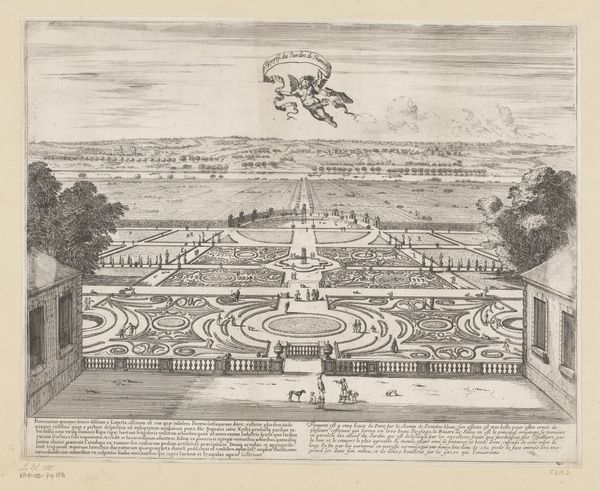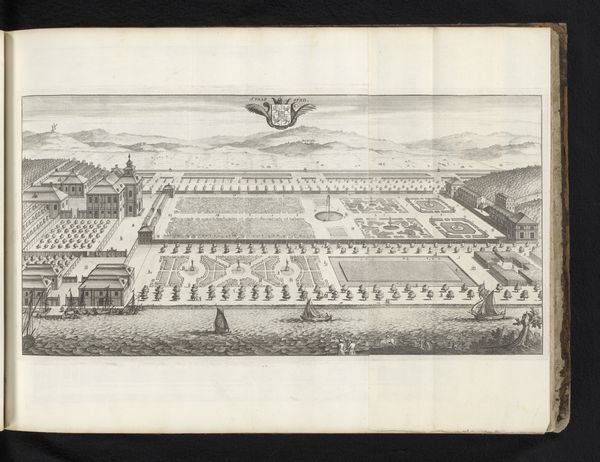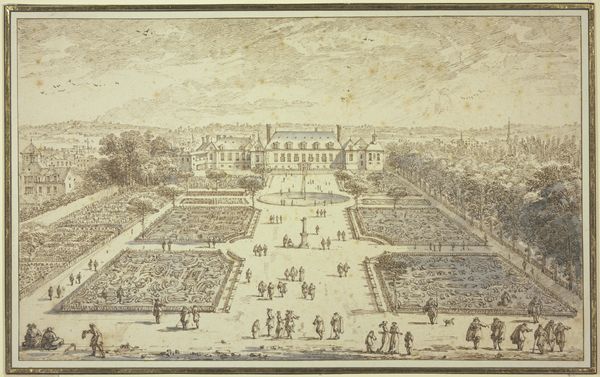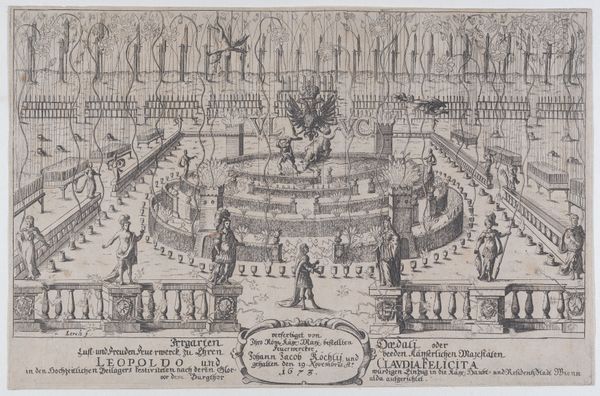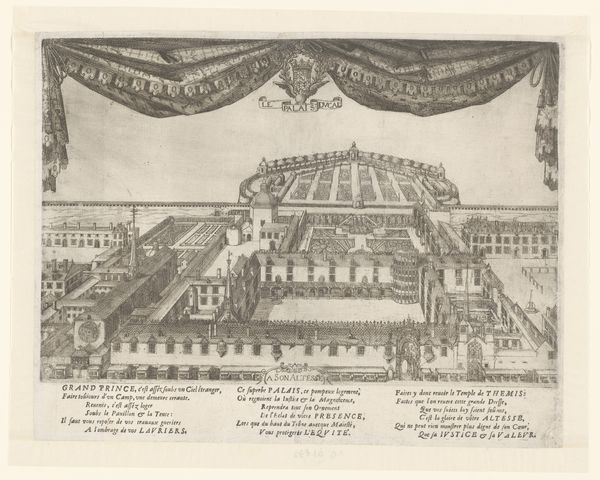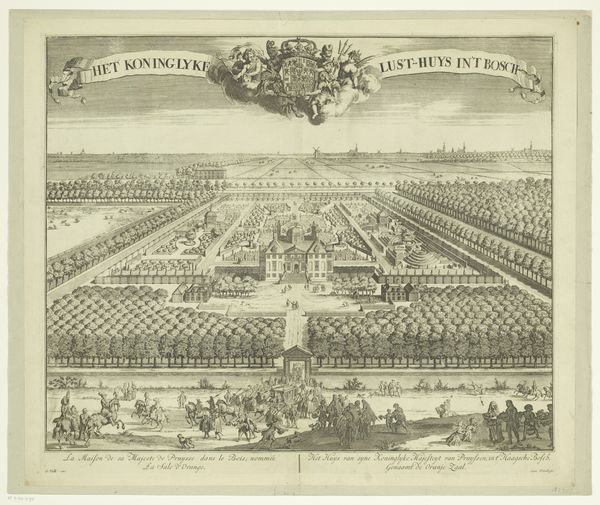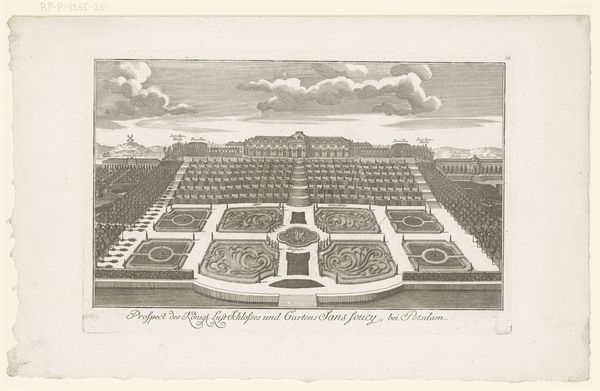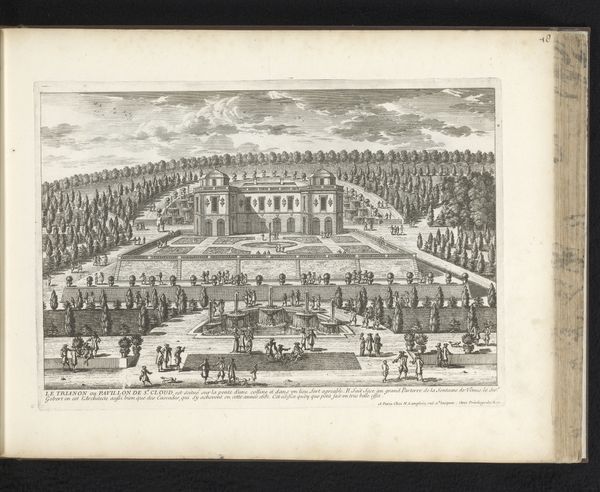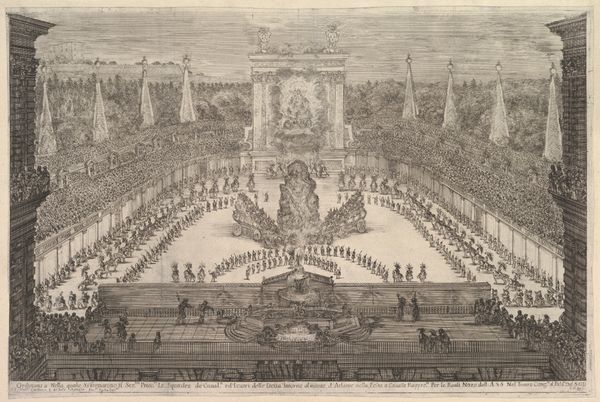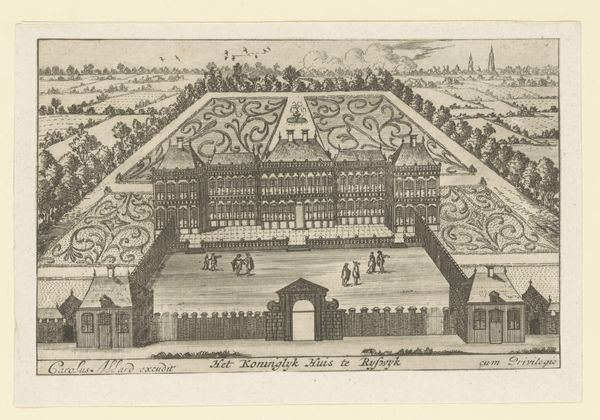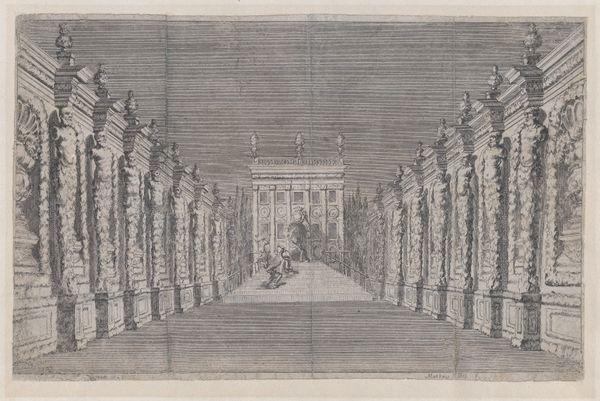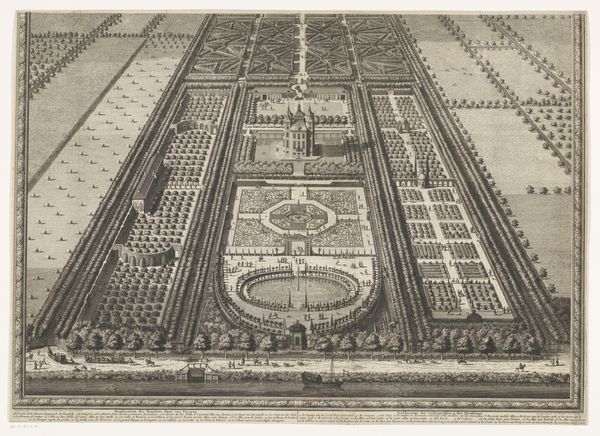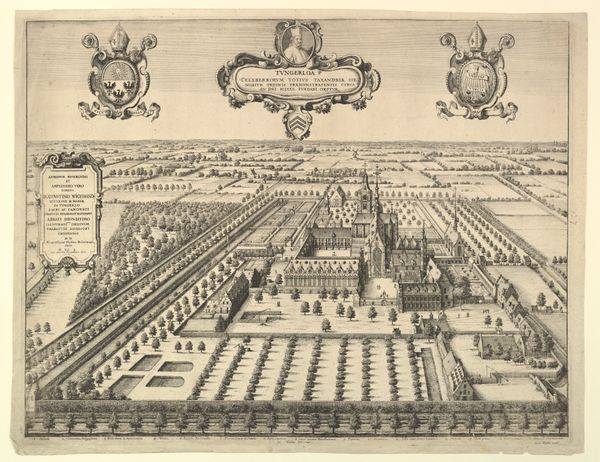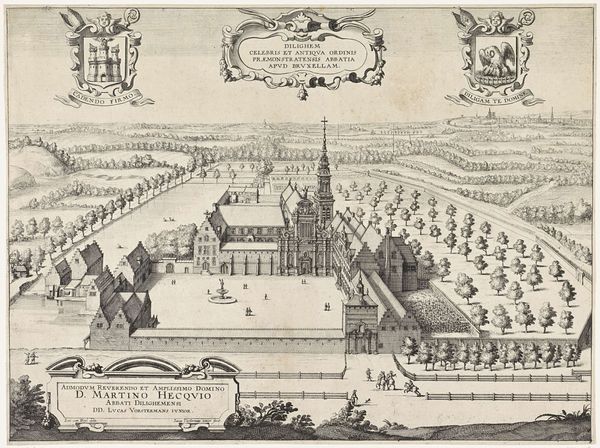
drawing, print, engraving
#
drawing
#
garden
#
baroque
# print
#
landscape
#
engraving
Dimensions: 8 1/4 x 13 x 7/16 in. (21 x 33 x 1.1 cm)
Copyright: Public Domain
Editor: Here we have Isaac de Caus' "Wilton Garden," a drawing or print from somewhere between 1635 and 1645, residing at The Met. The formality is astounding; it's almost like a stage set. What strikes me most is the ordered hierarchy embedded in the landscape. What can you tell me about this work? Curator: It’s interesting you mention a stage set. These gardens, popular amongst the European elite, were certainly stages for power. The rigid geometric organization, meticulously captured in the print, wasn't just aesthetic. It was about demonstrating control over nature and, by extension, society. Consider the historical context: this was an era of absolutism, where monarchs sought to visually project their authority and order. Editor: So, it’s less about appreciating nature and more about controlling it for political messaging? Curator: Precisely. Think about who could afford to commission such elaborate gardens. This wasn't the domain of the commoner. Gardens like Wilton were status symbols, visual declarations of wealth and influence during a period of intense social stratification. The drawing would then be reproduced, further broadcasting the family's power. Does seeing the drawing change your perception? Editor: Absolutely. It’s not just a pretty garden; it's a powerful statement, reinforced by its reproduction as a print for wider circulation. It also speaks to who the intended audience was—the elites who understood the coded language of power. Curator: Exactly. Understanding the historical and social context allows us to see beyond the surface and recognize the intricate power dynamics at play. What at first appears to be simply a design becomes a calculated statement of authority. Editor: I’ll never look at Baroque gardens the same way. It makes you question who gets to decide what’s "beautiful" and what message that “beauty” conveys. Curator: Indeed, questioning those decisions is precisely the point. The politics of imagery are always present, subtly shaping our perceptions.
Comments
No comments
Be the first to comment and join the conversation on the ultimate creative platform.
